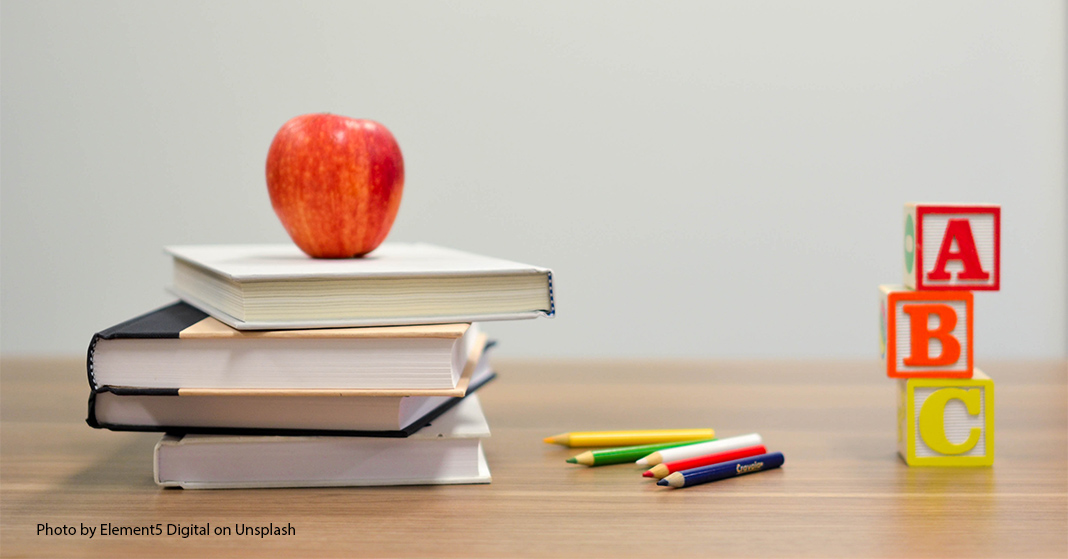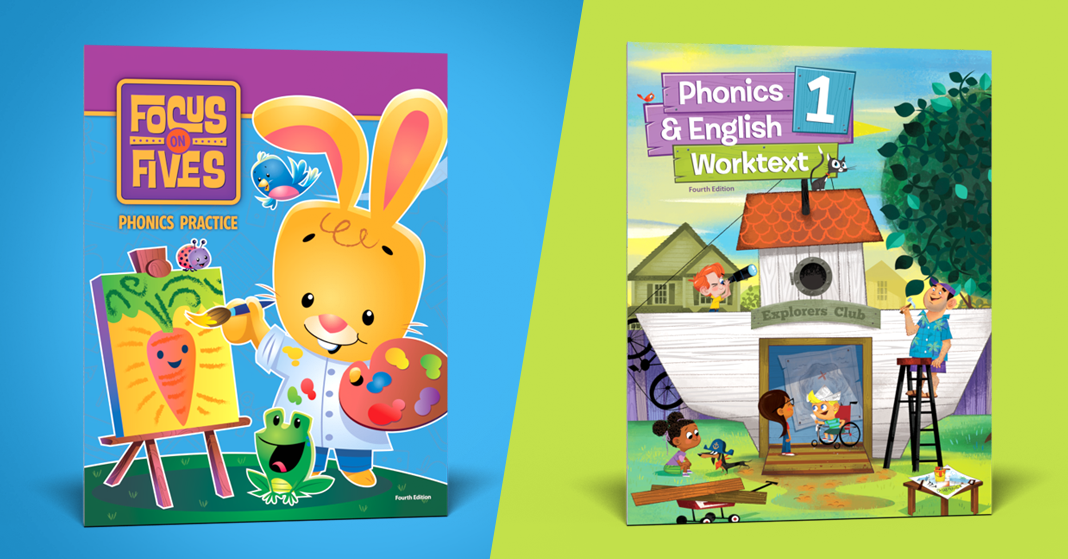
As your children approach graduation, are they planning for college in the fall? Or are they wondering whether a four-year college is really the best option for them? Depending on finances, career interests, or other factors, your children may want to pursue a career path that doesn’t require a college degree. Fortunately, there are plenty of non-college options available to them! [Read more…] about Non-College Options for Homeschoolers
homeschool
Making the Most of Breaks

We all need breaks—spaces of time where we step out of the regular routine and move into a different schedule, or perhaps no schedule at all. For a goal-minded homeschool parent, taking a break can lead to more stress than usual as kids have fewer tasks to occupy them. Let’s talk about a few different kinds of breaks, and discuss some tips for making the most of them.
The Adventure Break
This is the adventure you go on when you’re sick of all your usual haunts and familiar places. It’s a summer where you stuff backpacks with snacks and drinks and find all the trails you’ve never been on. Or you go to a different playground every day.
Your explorations might include visiting a nearby lake or waterfall, going horseback riding, taking a camping trip, or touring a historical site. A cave, a tunnel, a covered bridge, a rock formation, a nature preserve, a children’s museum, an arboretum—any point of interest within a day’s drive is fair game.
The best part? An adventure break often turns into an educational experience without much effort from you!
The “Anything Goes” Break
Sometimes, we all need a day or two where we do absolutely nothing useful. It’s the kind of break where kids get to do whatever they want all day long, with minimal rules. Maybe that’s extra TV or electronics while mom kicks her feet up and reads books. Maybe it’s take-out for every meal to minimize cleanup, and maybe you skip the household chores for a day or two.
The only trouble with this carefree break is that you eventually have to go back to normal, so be ready for that! Even so, this indulgent respite can be deeply refreshing and can help you appreciate your more structured way of life.
Peaceful, Purposeful Breaks
Perhaps the best summer break is a blend of adventure, activities, and rest. You can have days where you venture into the unknown, ready for anything, as well as days of quiet relaxation at home. Have some review papers and library books on hand for those hot summer afternoons. That way, your kids can keep their knowledge fresh. Puzzles, board games, Legos, water play, and art projects can keep kids busy for hours, even if you’re not feeling adventurous.
You could make a schedule for summer break. For example, some families prefer adventure in the morning and rest in the afternoon, while others prefer a day of adventure followed by a day of rest. Summer schedules differ for every family, especially if you have toddlers or babies in the mix. But the best experiences usually happen when you’re willing to bend the schedule, or toss it out altogether, and dive into a new experience with your children!
• • • • •
Rebecca is a work-at-home freelance writer, novelist, wife, and the mom of two bright-eyed little ones. She credits her success in writing and her love of books to her own mom, who homeschooled three kids from pre-K through high school.
3 Tips for Transitioning to Year-Round Homeschooling

A couple of years ago, my husband and I decided to dramatically change our homeschooling routine. We moved from homeschooling using a traditional school year calendar to homeschooling year-round. I wrote about the reasons we chose to move to a year-round schedule in the post “3 Reasons to Homeschool Year Round.”
We have not regretted our choice to homeschool year-round, but the transition was a bit challenging. If you’re considering switching to year-round homeschooling, here are some tips to help you on your way.
Plan Your Calendar
Set Up a Routine
Homeschooling year-round will give you a lot of flexibility with your schedule, but you still need a plan. You still must meet your your required number of days or hours. I do recommend setting up a routine—it will help your child immensely to know what you expect on any given day. Some families choose to homeschool five days a week for a set number of weeks and then take a week or two off. My family has adopted a four-day-a-week schedule, and we try to take the same day off every week.
Plan Time Between School Years
It will also help your family if you plan a multi-week break between school years. I have found that I need time to mentally wrap up our school year, pack away any curriculum I hope to reuse in the future, and give myself a “breather” before starting all over again. I usually plan on a four to five week break between school years. Having that longer break also gives a “freshness” to the new school year that allows me to make changes to old routines more easily.
Communicate Your Homeschool Plan
If you are planning to homeschool year-round, you will want to communicate your plans to any homeschool umbrella organizations that you may be a part of. My family is a part of the Academy of Home Education (AHE), and every year we email AHE a copy of our planned yearly homeschool calendar which we usually create in Excel. Based on our calendar, AHE adjusts our reporting deadlines so that we don’t incur late fees.
Anticipate the Need for Adjustments
Adjust Your Curriculum
You will have to make some adjustments along the way. For example, the BJU Press spelling curriculum is set up for a five-day school week, which did not fit well with our four-day week. In order to avoid the possibility of having to take a spelling test after a three-day break from school, we decided that we needed to do spelling five days a week, even on our “day off.” It was an easy adjustment.
Adjust Your Grade Reporting
We also had to make some adjustments to our grading and reporting. Our quarters are usually 11 to 12 calendar weeks long, which at first glance, doesn’t fit very well with the nine-week grade reporting forms required by our homeschool organization. But this was an easy fix as well—we just ignored the calendar’s weekly divisions and counted every five days as a “week.”
Our family has really been blessed by year-round homeschooling, and I’m sure yours will be as well. I hope that some of these tips will make your transition easier. If you still need help, reach out to one of your local HomeWorks consultants—they are there for you!
The BJU Press Approach to Phonics
 For most of us, by the time we reach adulthood, reading comes naturally. We don’t have to think about which letters make what sounds or the rules for making different sounds. We just read. But then you look at your young children who have only been talking for a short while. How do you even begin to teach them to read? Naturally, the ABCs are a great place to start, but what comes after that? What is phonics and how are you supposed to teach it?
For most of us, by the time we reach adulthood, reading comes naturally. We don’t have to think about which letters make what sounds or the rules for making different sounds. We just read. But then you look at your young children who have only been talking for a short while. How do you even begin to teach them to read? Naturally, the ABCs are a great place to start, but what comes after that? What is phonics and how are you supposed to teach it?
BJU Press’s approach to phonics in early learning and Grade 1—and even beyond to Grade 3—is fairly straightforward. If your children can talk, then they already know most of the words that they’ll be reading. You just need to give them the tools to read them.
Laying the Groundwork with Fun and Games
As a homeschool parent, you might hear a lot about sneaky learning—the idea of hiding learning opportunities in games and activities that your kids enjoy. But when your kids are just learning to read, there’s no point in hiding learning because all they do is learn, and most of the things they do are fun and games. All you need to do is direct them towards fun that will prepare them for future learning. Songs that teach rhymes, alphabet games, tracing activities, even reading to them while they look over your shoulder all help prepare your kids for the next step in learning to read. And it sets up a strong foundation to build on.
That’s why each of BJU Press’s early learning programs—Pathways for Preschool, Footsteps for Fours, and Focus on Fives—focuses heavily on activities, games, and characters that will keep children engaged and prepare them for learning.
Building Awareness
Why do you spend so much time laying the groundwork? You’re helping your children associate the sounds they hear and use to communicate with the letters and words they see on the page. It’s a big step from auditory and oral functions to visual functions.
Letter Sound Associations
Before they can read words, they’ll need to identify the sounds they hear. And that requires phonemic awareness—the ability to hear and recognize the individual sounds, or phonemes, that make up words. The s sound, the i sound, and the t sound in sit, for example. In Focus on Fives, Phonics 1, and English 1, we use numerous strategies for building phonemic awareness, including phonics stories and characters, phonics songs, rhyming songs, and read-alouds.
Manipulating Sounds
But phonemic awareness goes beyond just recognizing sounds. It’s also about being able to use and manipulate them. If your child knows the letter sounds for sit, as well as other consonant sounds, he or she can manipulate those consonant sounds into other members of the _it word family. With phonemic awareness and word families, children can learn proper pronunciation and find meaning rapidly. For children learning phonics, the words they’re starting with are usually words they already know. They need to be able to associate the letters they don’t know with the sounds they do know, so it’s less about building vocabulary and more about being able to decode sounds from letters. As they learn new sounds, they can practice combining letters and sounds into real words, and even find new words by looking for familiar patterns.
Keeping It Fun
Instead of teaching one word at a time, you’re equipping your children with the tools they need for reading all kinds of words. Tools like short and long vowels, consonant blends, r-influenced words, special vowel sounds, silent consonants, suffixes, and syllable division. Of course, most of these tools don’t have much meaning to a 5- or a 6-year-old who’s learning to read. That’s where we bring the fun back in with characters and games. Mr. Short, Miss Long, Marker E, Bossy R, and Miss Silent all give engaging visual cues that help your children learn and remember.
Reading Readiness
The goal of phonics instruction is for your children to be ready to read with comprehension and confidence. But teaching phonics alone can’t get you all the way there. Your children will also need opportunities to apply phonics principles in reading lessons. One key to that will be a phonics and reading program that supports them as they develop their skills. In Focus on Fives, we teach phonics and reading together, but in Grade 1, phonics and reading are two correlated subjects, and children practice and apply their skills separately. We continue to support phonics through Reading 3. Additionally, your children will need regular opportunities to read silently to develop reading comprehension, and to read orally to develop fluency. When children practice reading aloud, they learn to apply speaking rules (pauses, emphasis, and pacing) to their reading, adding depth and meaning. This kind of practice also improves their ability to communicate verbally.
Ultimately, you are preparing your children to read the Bible with confidence and clarity so that they can build their worldview on its principles. The way there is just one step after another. Your kids will be life-long readers before you know it!
Research Papers: Embrace the Opportunities

Sometimes, I feel like people don’t talk enough about research papers or give them enough credit. They might just be one of the most valuable learning opportunities you can give your children. After all, isn’t learning about a topic, knowing how to gather reliable information about that topic, formulating an opinion about it, and logically supporting that opinion with facts exactly what you want your children to be able to do?
Unfortunately, we’ve all seen—or written—one of those research papers that was all fluff, no substance, and somehow still got a good grade. I will readily admit that I’ve written a few of those myself. Obviously, the writer didn’t really learn anything, so what’s the point of assigning it? Research papers shouldn’t be just busywork. Each research paper you present to your kids is a beautiful opportunity for them to apply all the lessons you’ve been working on this year. And for you, a research paper is an opportunity to see how well your children have learned.
The Opportunity for Application
Science courses don’t include labs just for fun. Math courses don’t give math problems just to make it hard. Students need a chance to apply what they’ve learned in a new way so that it really sticks. And that’s as true for writing and reasoning skills as it is for the water cycle or long division. In a research paper, students can use those grammar rules they’ve learned to clearly communicate what they’re thinking. And, as they practice formulating an argument, they can use what they’ve learned about logical fallacies to make their argument strong.
Now, perhaps you think that the application questions in your child’s grammar workbook are enough. But applying grammar or logic rules to a sentence you’re expecting to be wrong is different from using those rules while you’re writing. Writers don’t think about the rules as they’re writing; they’re thinking about the next point they need to make or how thoughts connect. When you see your children’s writing, you’ll be able to know whether they really understand the rule. A research paper is a real-life, low-stakes opportunity to apply the rules—good practice for a job application letter or college entrance exam.
The Opportunity to Practice Critical Thinking
When students do a research paper properly, a lot of thought goes into the process. What kinds of information will validly support their thesis? How will they address information that contradicts their thesis? In addition to shaping their argument, they’re going to have to find and address questions that they might not expect. If they’ve never written a longer paper, they will need to learn how to adjust their process to account for the greater detail they’ll need. But it goes beyond just crafting the argument and planning out the project.
Researching also demands critical thinking skills. Remember that old saying, you can lead a horse to water, but you can’t make it drink? You can write book after book about research techniques and finding information, but it’s all useless if the students don’t read comprehensively and consider the meaning. To research any topic, students need to actually think about the information they’re reading—which is something you often try to have your children do in a literature course. When they’re looking for information that supports an argument, it demands a whole new level of reading comprehension. I’ve had countless students who cited inappropriate sources for support because they didn’t actually read what their sources said. A research paper will tell you whether your children have developed their reading comprehension well enough to read information critically and apply it to their argument.
The Opportunity for Excitement
Have you ever found that, after spending hours on a single topic, you develop a unique interest in that topic? Writing about anything will leave that kind of impact. No matter what your feelings were about a topic before you decided to write about it, once you’ve spent hours researching it, developing an opinion, and writing and rewriting your argument, you’re going to have an interest in it and—dare I say?—an excitement about it. The same thing happens for your children when they write a research paper. They might not admit it. They might not follow up on that interest. But in the process, they will come away knowing something new.
While it is important to allow your children to write about what they love, they also need to be able to embrace a new, unfamiliar subject. Research papers are a valuable way to introduce children to new topics—even though they may not want that introduction.
In your homeschool, every chapter, every lesson, and every assignment is another opportunity for your children. Research papers may be a more challenging opportunity, but clear communication, reasoning skills, and learning are worth the effort.